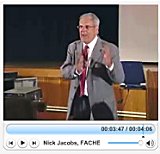Back in the 1960s or as the Brits nicknamed it, The Swinging Sixties, lots went on that some of us would prefer to remember as interesting, youthful experiences that created lifetime memories. Besides the British music invasion, drugs became popular and commonplace among the hippie generation, but I missed out on all of that because my education took place at a conservative school.
Being a traditional student heading toward a teaching career also meant that my career would be significantly jeopardized had I not stayed within the parameters of expected behavior. Unfortunately, the movie, Animal House, was not a realistic depiction of my college experience.
One phrase that did catch on during that liberal era of the late 60s and early 70s was “Don’t bother him, he’s contemplating his navel.” It’s thought that it became popular in Western culture during a time when the Beatles and other luminaries were practicing transcendental meditation. This navel-gazing phrase related to introspective thinking and mindfulness through meditation. It implied the person in question was engaged and completely focused on their own thoughts or mental silence. If done correctly, one’s emotions often feel disconnected from the outside world.
Since that time, numerous well-known people have found meditation to be an important part of their lives. Meditation practicing entertainers include Hugh Jackman, Ellen DeGeneres, Jerry Seinfeld, Katy Perry, and the late basketball great Kobe Bryant who practiced meditation to enhance focus and mental resilience as part of a daily training routine. Of course, there are also thought leaders like the Dalai Lama, Drs. Deepak Chopra and Dean Ornish, publisher Arianna Huffington, the entrepreneur Russell Simmons, and former NFL player Ricky Williams who are famously recognized for using these mindful practices.
Individuals who practice meditation regularly credit the practice with positive outcomes ranging from better sleep, stress reduction, relief from both anxiety and depression, much-improved focus and concentration, enhanced self-awareness, better relationships, lower blood pressure, pain management, enhanced creativity, spiritual growth, and one of my favorites, neuroplasticity.
Several studies have shown that practicing and playing musical instruments can significantly contribute to neuroplasticity. Music can enhance fine motor skills, auditory processing, memory and pattern recognition, multi-sensory integration, cognitive flexibility, brain connectivity, and brain reserve.
Neuroplasticity is the underlying property of the brain that includes learning, adaptation, and recovery from injuries. It truly represents the brain’s ability to rewire itself. With that in mind, neuroplasticity contributes significantly to education, therapy, and overall cognitive health.
If I recommended that you meditate for 10 or 20 minutes in the morning and again at night, you might snicker and suggest that not only do you not have time, but more bluntly that you also think it’s a waste of time. If I told you that by doing so you could significantly impact the creation of new neural connections that would modify your brain’s function in ways that would permit you to improve and optimize your performance while adjusting to new circumstances, you also might suggest that I move on.
Let’s, however, look at the list of positives related to further development of neuroplasticity beginning with the fact that it will allow you to acquire new skills, knowledge, and behaviors. It also enables you to adjust, and more importantly, to adapt to changes in your environment. It contributes significantly to more efficient memory storage, the capacity to adapt and remain functional as we age, and the ability to shift perspectives and respond to new challenges. And the list goes on and on.
If you’re a type A, hyper-active person, meditation may provide you with a welcome relief from yourself. Find a peaceful, quiet space, force yourself to focus on the present, breathe deeply and use that breath to anchor. Acknowledge external interferences but don’t dwell on them and remember that contemplating your navel by deep breathing alone will create a natural relaxation response that is good for your health. Try it. You might like it.




